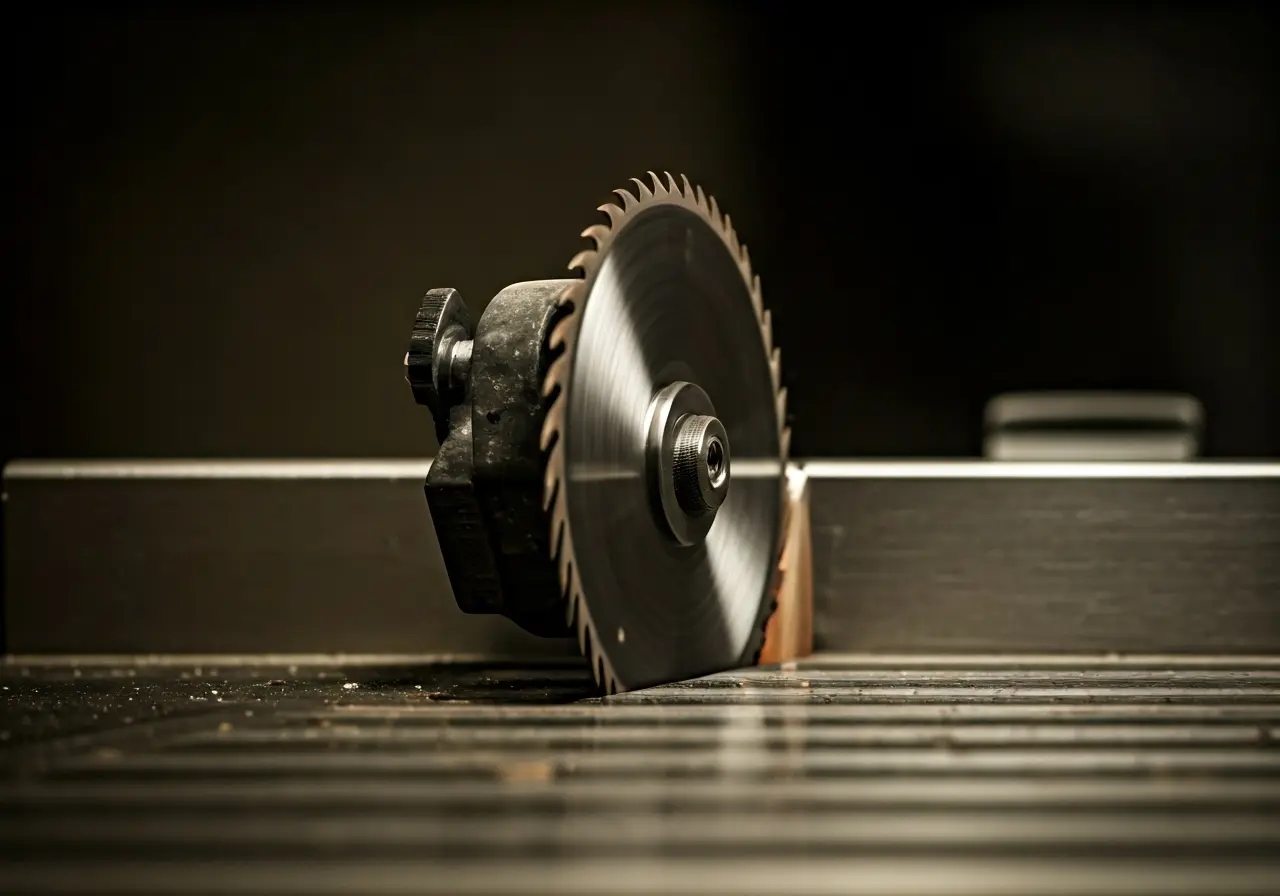Table saws are a fundamental tool for any woodworking enthusiast. Whether you’re crafting furniture or engaging in home improvement projects, mastering precision with your table saw can elevate your work from good to exceptional. Dive into these tips to ensure every cut is clean and exact.
Understanding the Importance of Blade Selection
Choosing the right blade for your table saw is crucial for achieving accurate cuts. Blades come in various types and tooth configurations, each suited for different materials and purposes. Understanding these differences can significantly impact the cleanliness of your cuts.
For instance, a crosscut blade has more teeth than a rip blade, allowing for smoother cuts across the grain. On the other hand, rip blades have fewer, but larger teeth, which are ideal for ripping through wood with the grain. This distinction is vital for those who wish to maximize their cutting precision and efficiency. Selecting the wrong blade can lead to chipping or burning of your wood, and no craftsman wants that. Investing in a quality blade tailored to your specific projects is truly worth its weight in gold.
Moreover, some advanced blades are designed with innovative features to reduce heat buildup and dust, contributing to cleaner, safer working conditions. Given the wide variety of blades available, understanding the importance of selecting the right type adds layers of safety and precision to your woodworking project.
Setting Up the Table Saw for Accuracy
Proper setup of your table saw is essential for precision. This includes aligning the miter gauge, adjusting the fence, and ensuring the blade is parallel to the miter slot. Small tweaks in setup can lead to big improvements in cut accuracy.
Start by checking the alignment of the table saw’s blade to the miter slot using a combination square or a highly accurate caliper. This ensures that your cuts don’t wander, and you’ll achieve a true path along the wood. Once the blade is aligned, the next step is to adjust the table saw fence parallel to the miter slot, which prevents the wood from pinching the blade, a common cause of kickback.
Additionally, verify that the rip fence lock works well and that the fence doesn’t move during operation. These simple steps, if followed meticulously, guarantee a superior level of accuracy in your cuts.
Mastering the Art of Using Guides and Jigs
Guides and jigs are invaluable tools that help maintain consistent measurements and angles. From sleds for cross-cutting to feather boards for holding wood steady, explore how these accessories can help you achieve the perfect cut every time.
Building your own crosscut sled can dramatically enhance the safety and accuracy of your cutting activities. A sled provides a stable base for the wood, reducing the need to handle sheets during operation, which minimizes errors. Meanwhile, feather boards apply firm pressure to the board against the fence, ensuring it doesn’t deviate from its path.
Another fantastic tool is the taper jig, perfect for creating beautiful angled cuts on table legs that would otherwise be difficult to achieve. Each of these tools provides stability and assures an impeccable finish, which is crucial for any woodworking project where precision is paramount.
Ensuring Safety While Maintaining Precision
Safety should always be a priority when using table saws. By integrating safety protocols with precision techniques, you can work efficiently without compromising on safety. Consider the use of push sticks and riving knives among other safety measures.
A crucial safety tool for any table saw user is the push stick, which helps you guide wood while keeping your hands at a safe distance from the blade. Equally important is the riving knife, a small, crescent-shaped piece of metal that sits behind the saw blade. This device helps prevent the wood from pinching the blade and causing dangerous kickback by maintaining the wood’s kerf during and after the cut.
Combining these with safety glasses and hearing protection ensures that woodworkers can concentrate on achieving clean, precise cuts without putting themselves at risk. By adopting a holistic safety approach, the risks associated with table saw usage are significantly minimized.
Regular Maintenance for Optimal Performance
Keeping your table saw in top condition ensures it performs well over time. Regular maintenance tasks such as cleaning, lubrication, and blade sharpening can ensure that your cuts remain precise and your work stays at a high standard.
Cleaning is the most straightforward maintenance task — a simple dust-off of the saw’s components is a good weekly habit. Periodically, check the table saw’s moving parts for debris. Consider lubricating the gears and elevation mechanisms using a dry lubricant designed for power tools.
Furthermore, sharpening your blades or changing them when they become too dull is essential for maintaining cut quality. A dull blade not only reduces the quality of your cuts but also puts extra stress on the table saw’s motor, potentially shortening its life span. Regular check-ups keep your equipment in prime condition, offering longevity and maintaining those critically clean cuts.
The Path to Perfect Cuts
Achieving clean, precise cuts with a table saw requires a blend of knowledge, skill, and safety practices. By selecting the right blade, utilizing various guides, and maintaining your table saw, you can enhance the quality of your woodworking projects. Keep these tips handy and transform how you work with wood.






Leave a comment
This site is protected by hCaptcha and the hCaptcha Privacy Policy and Terms of Service apply.